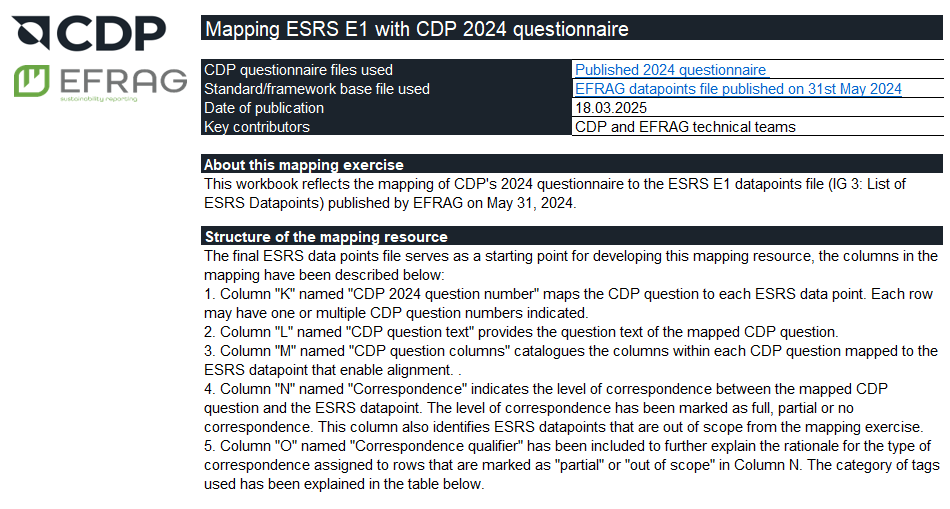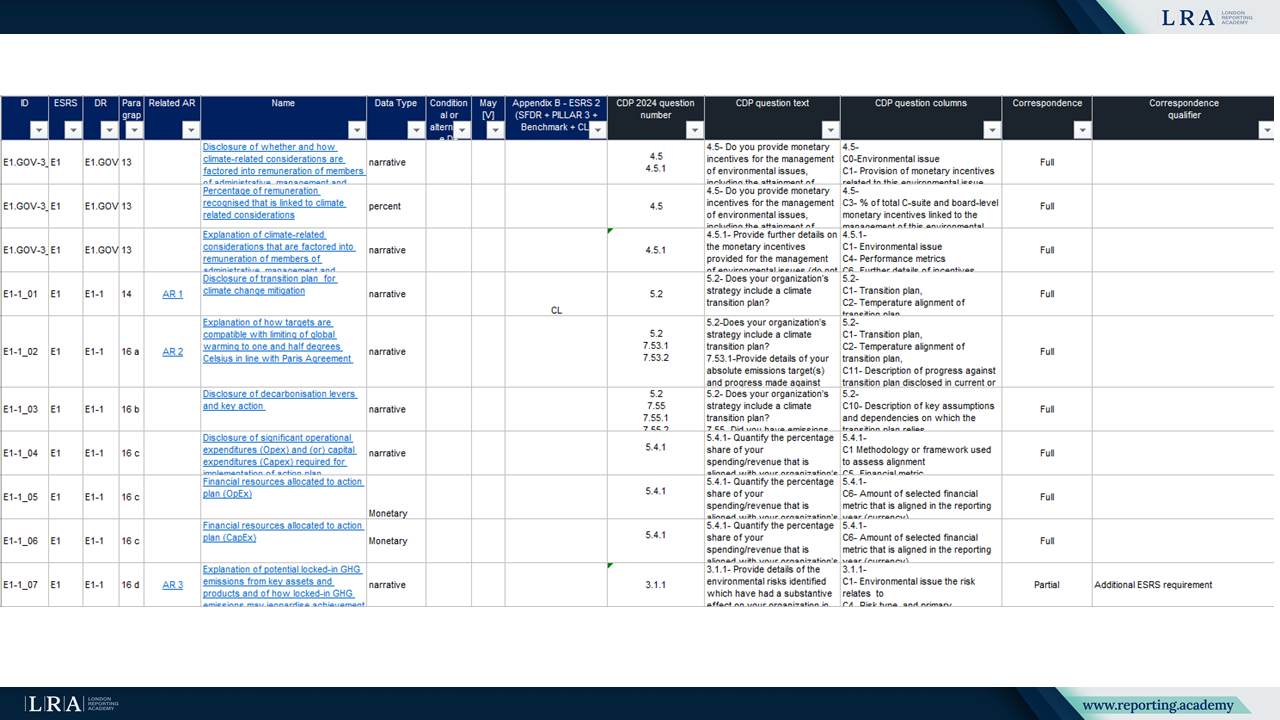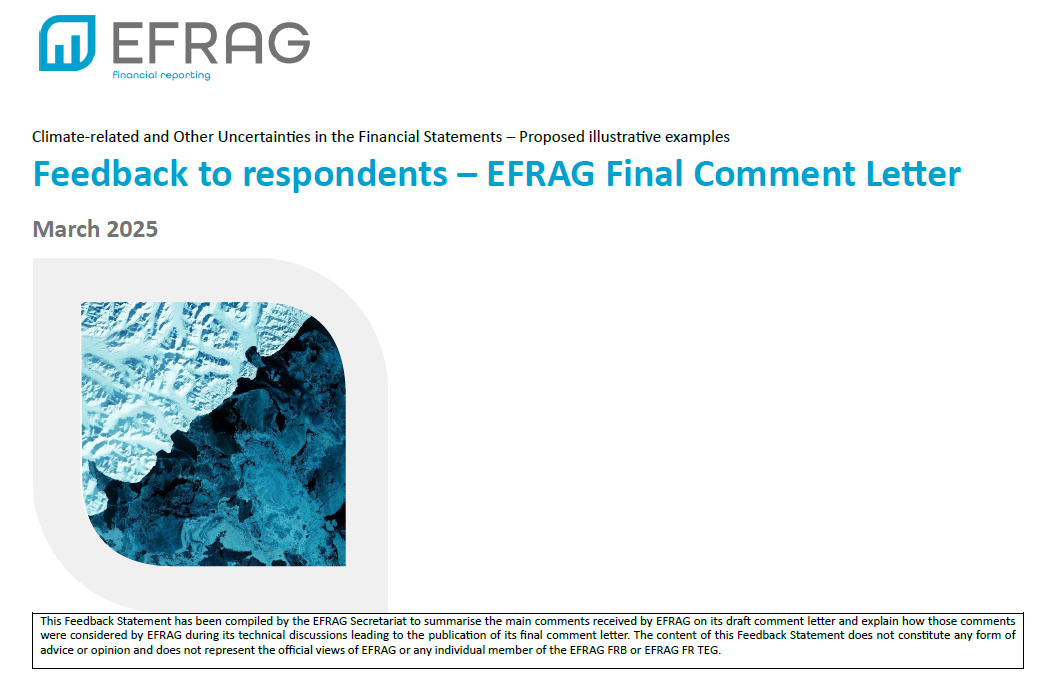New CDP-ESRS Correspondence Mapping Simplifies Global Sustainability Reporting
EFRAG and CDP have published a detailed mapping between the 2024 CDP question bank and the ESRS E1 standard. This tool helps reporting professionals understand how disclosures align across both systems, streamlining processes and improving data consistency.

EFRAG (European Financial Reporting Advisory Group) and CDP, the global environmental disclosure platform, recently published a significant resource establishing a correspondence mapping between the CDP question bank and the European Sustainability Reporting Standard E1 (ESRS E1). This mapping aims to simplify and streamline climate and sustainability disclosures, reducing complexity and enhancing reporting efficiency for organisations using ESRS. With this new resource, organisations reporting under ESRS E1 will be better prepared for CDP disclosures, and those already using CDP disclosures will find it easier to meet ESRS E1 reporting requirements.
Background and Collaboration Between EFRAG and CDP
European Sustainability Reporting Standards (ESRS) were developed to support the implementation of the Corporate Sustainability Reporting Directive (CSRD), providing organisations detailed guidance on reporting sustainability-related impacts, risks, and opportunities. Specifically, ESRS E1 addresses climate-related strategies, performance, and risks, ensuring clear, reliable, and comparable climate disclosures.
Recognising the complexity organisations face in navigating multiple sustainability reporting standards, EFRAG and CDP collaborated to develop a correspondence mapping between the CDP question bank and ESRS E1 datapoints. Initially announced in November 2024, this collaboration culminated in the release of the correspondence document on March 18, 2025, representing a critical step towards harmonising these influential reporting standards.
Correspondence Mapping Document and Practical Benefits

Source: ESRS E1 – CDP correspondence mapping
The mapping is based on CDP's 2024 questionnaire and corresponds directly to the ESRS E1 datapoints outlined in the IG 3: List of ESRS Datapoints, published by EFRAG on May 31, 2024. According to the ESRS E1 – CDP correspondence mapping document:
- 115 ESRS datapoints fully align with CDP questions, simplifying reporting and reducing redundant disclosure efforts.
- 85 datapoints partially align, accompanied by detailed clarifications highlighting differences and specifying additional disclosure requirements under ESRS.
- 45 datapoints have no direct correspondence, and 23 datapoints fall outside the scope of CDP.
The document clearly outlines key qualifiers for partially aligned datapoints:
- Additional disclosure requirements specific to ESRS (47 cases).
- Methodological or scope differences between CDP and ESRS (37 cases).
- Difference in semantics (1 case).
This detailed structure enables organisations to precisely identify overlapping and unique disclosure requirements, effectively manage sustainability reporting processes, and significantly reduce administrative burdens.
Optimised Sustainability Reporting and Investment Decisions
The CDP-ESRS correspondence mapping offers practical value by clearly identifying overlaps and distinctions between ESRS E1 and CDP requirements. This clarity significantly reduces duplication in data collection, streamlining internal reporting procedures and helping sustainability professionals prioritise their efforts effectively. By explicitly highlighting where additional ESRS disclosures are required beyond CDP questions, the mapping allows professionals to allocate resources more efficiently and enhances the overall quality and accuracy of sustainability reporting. Additionally, investors benefit directly from this initiative, as the increased clarity and comparability of disclosures enable better-informed decision-making. By providing consistent and transparent sustainability data, the mapping supports investors in assessing environmental risks and opportunities more accurately, ultimately aiding in more effective portfolio management and strategic investment choices.



